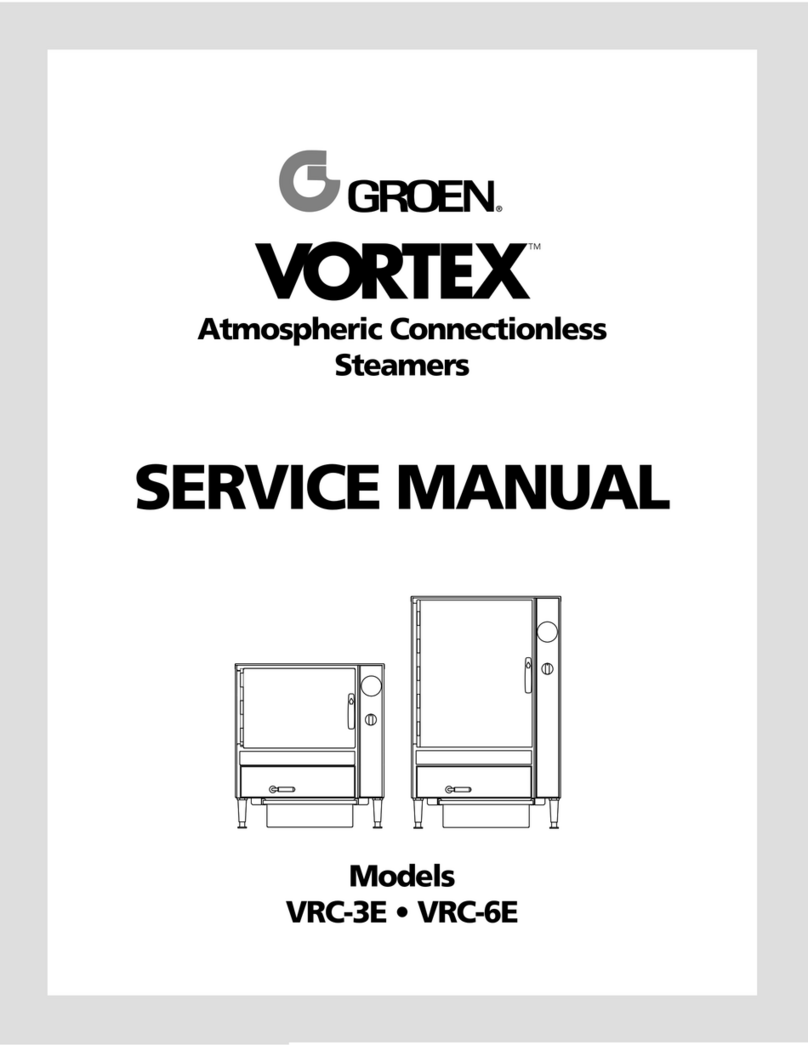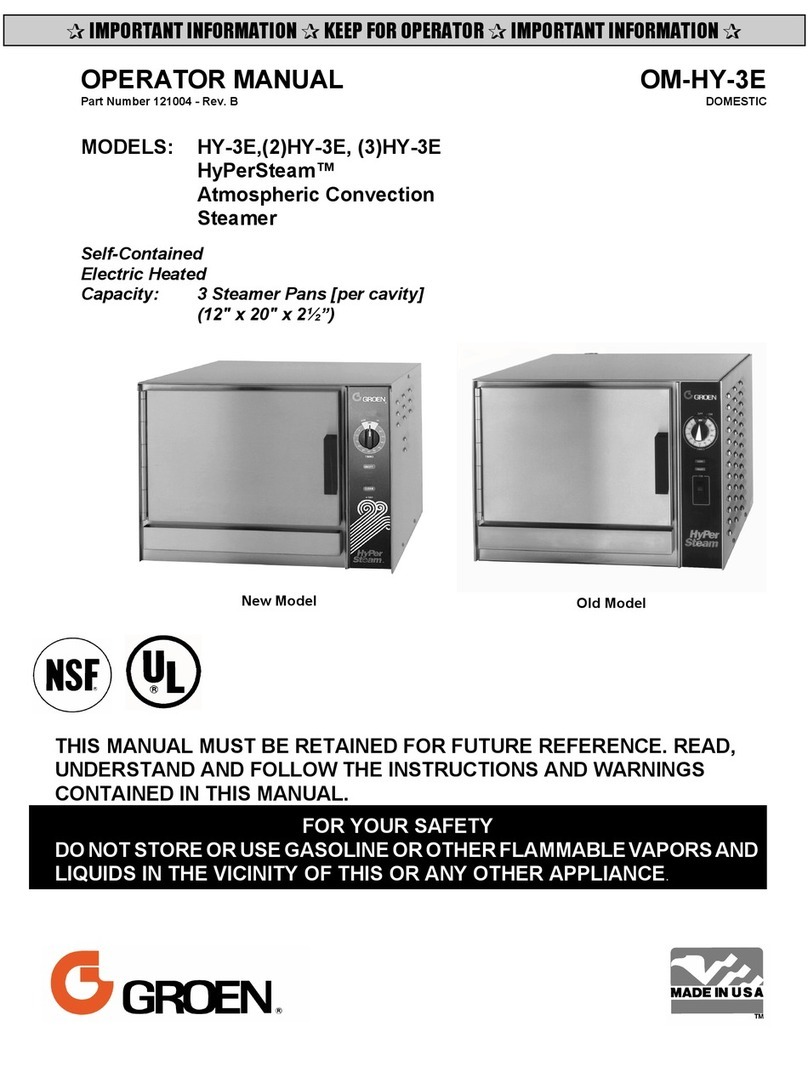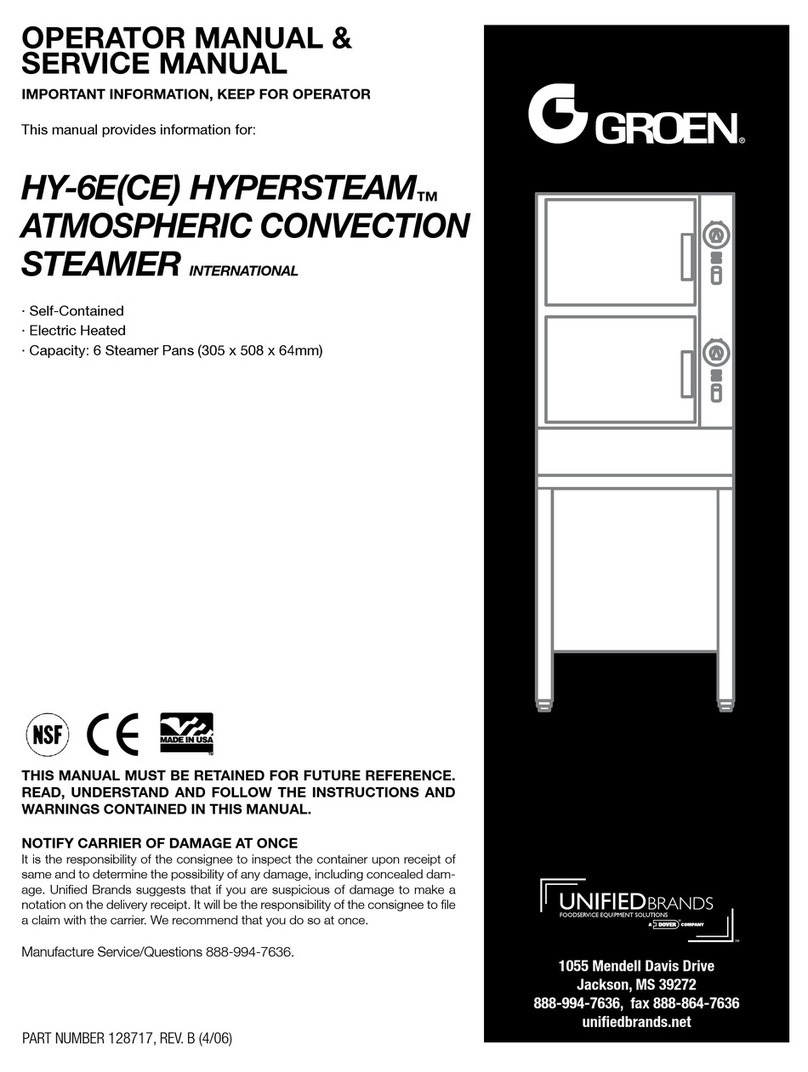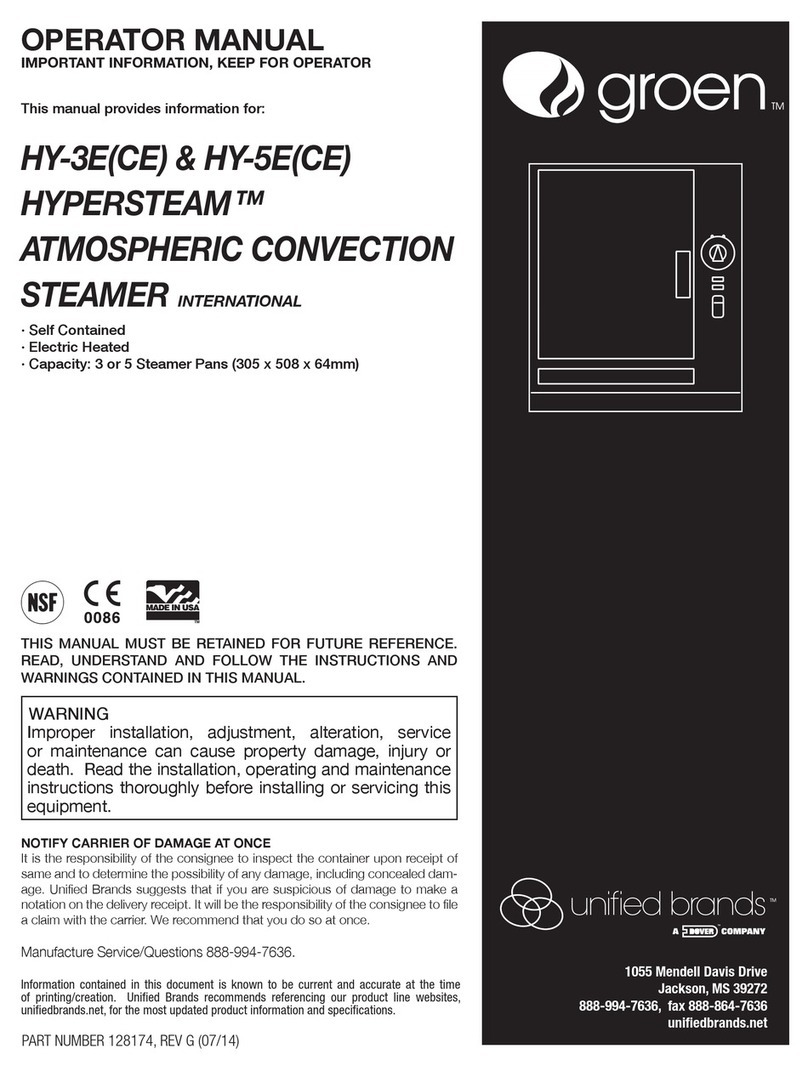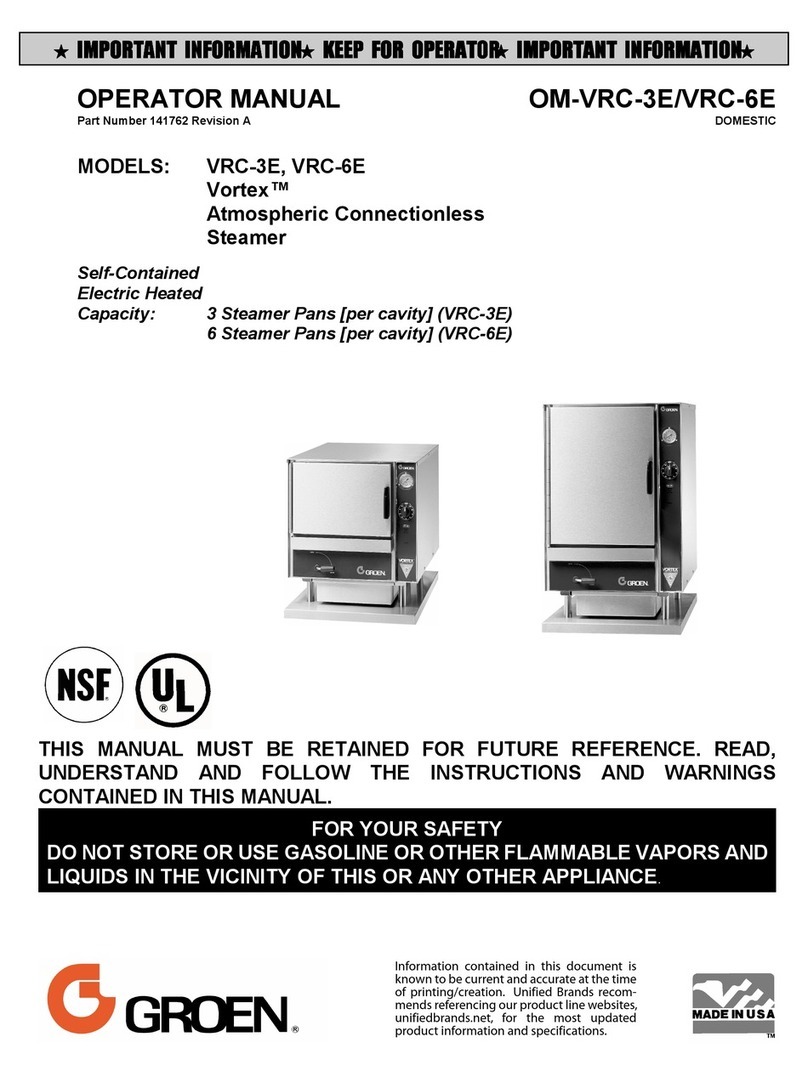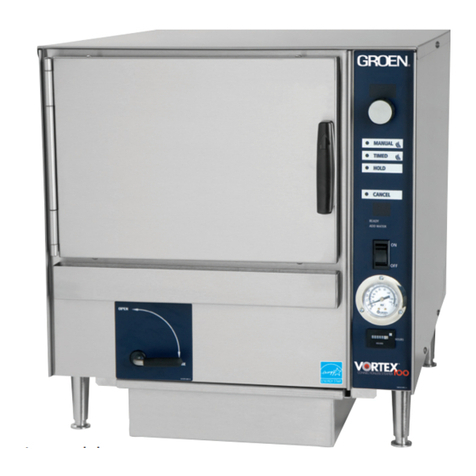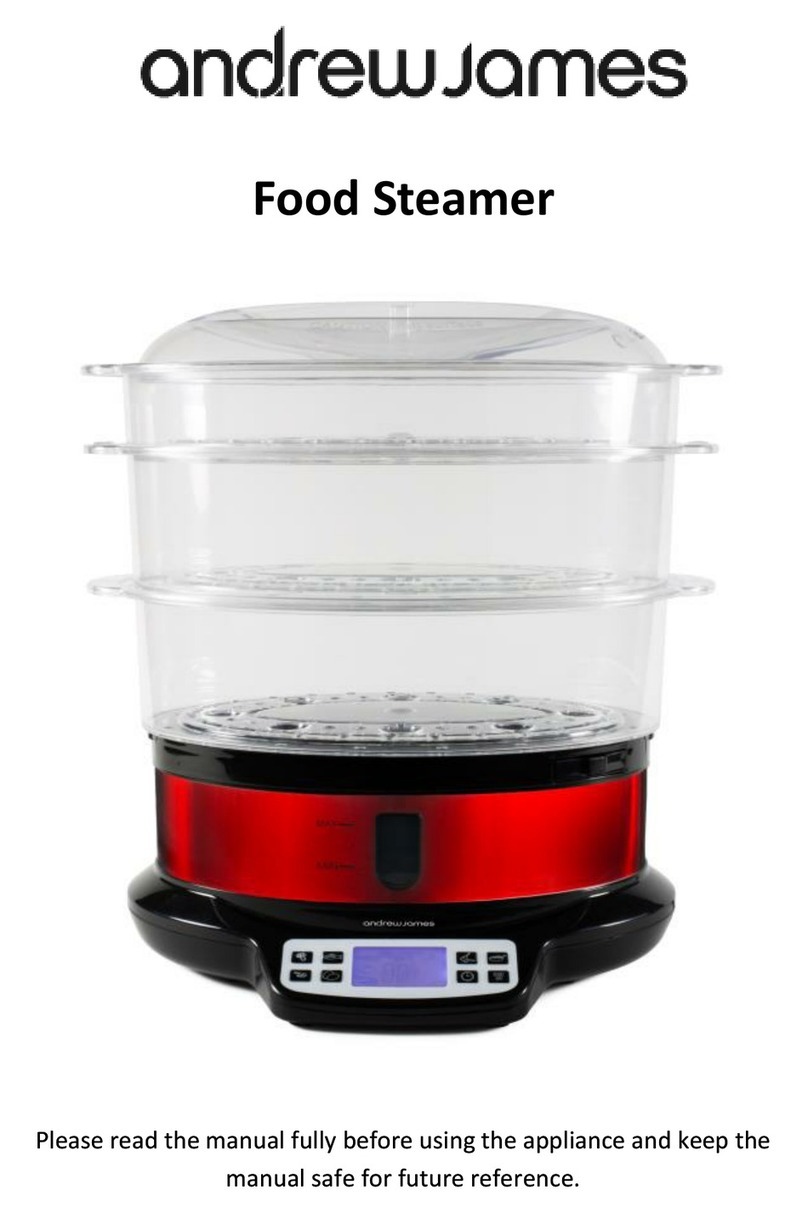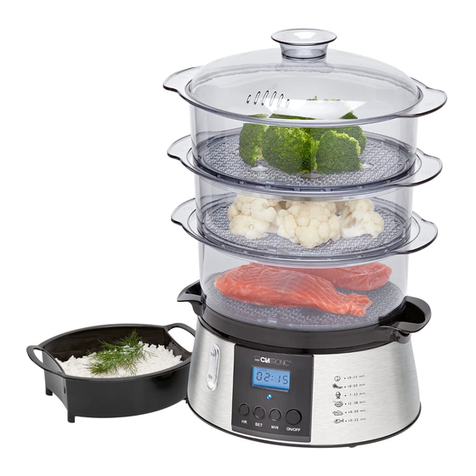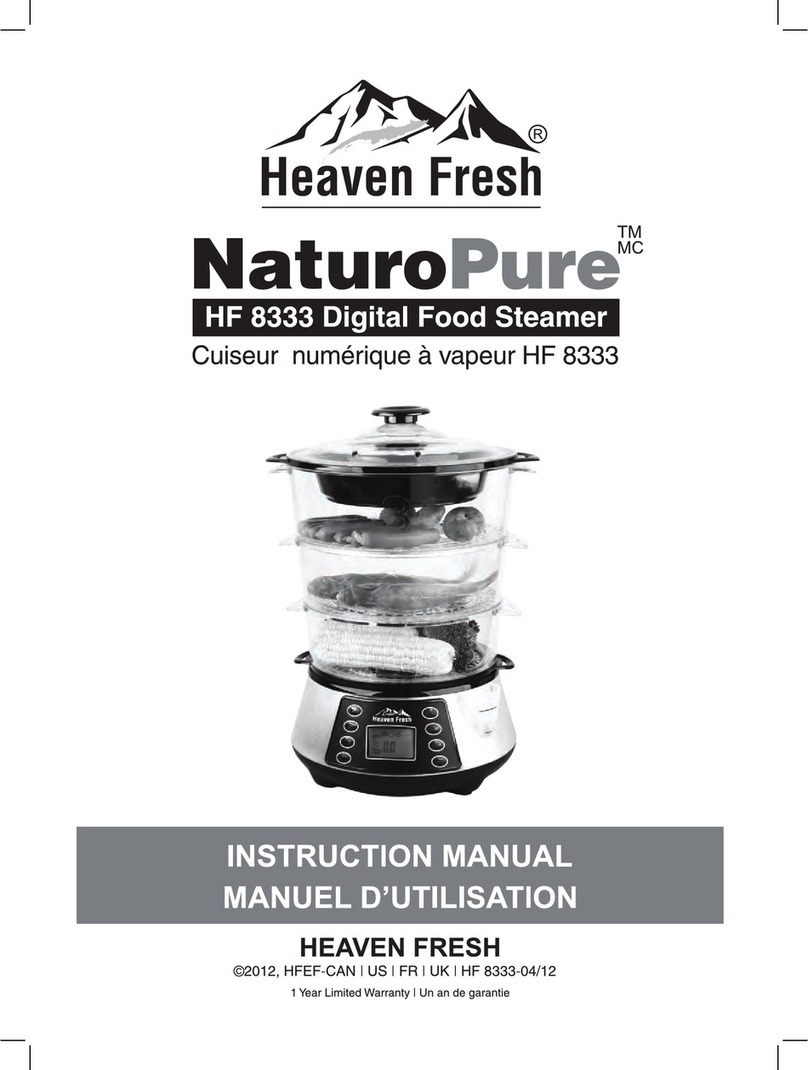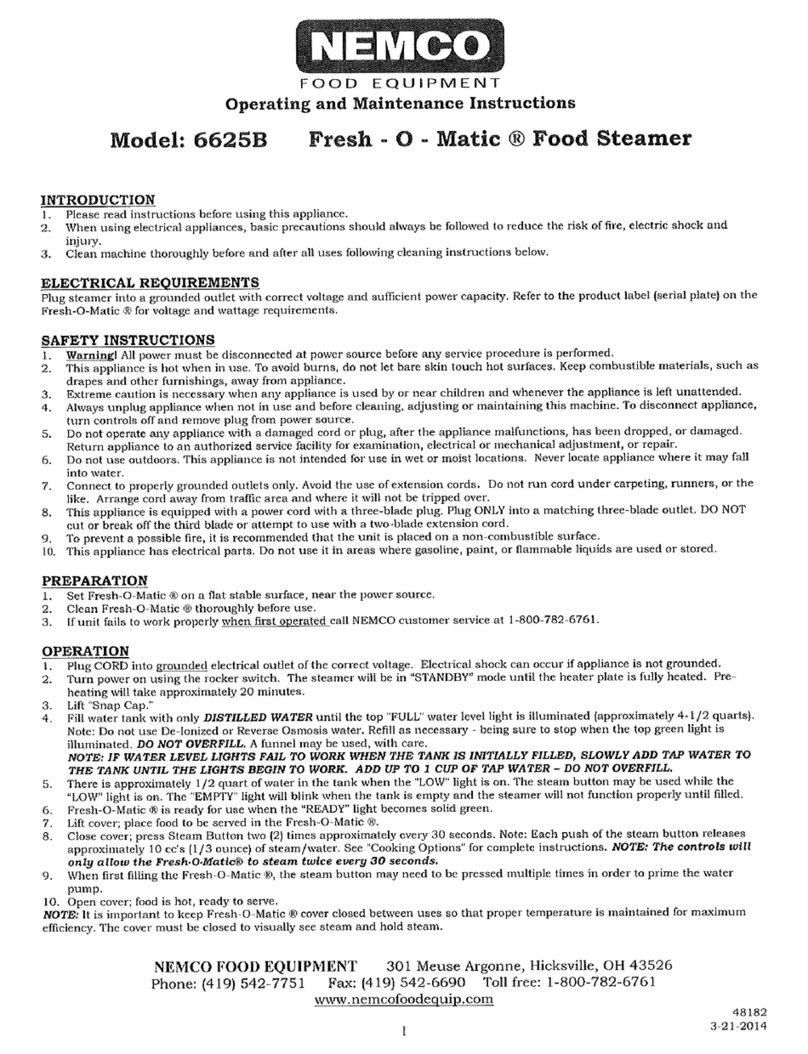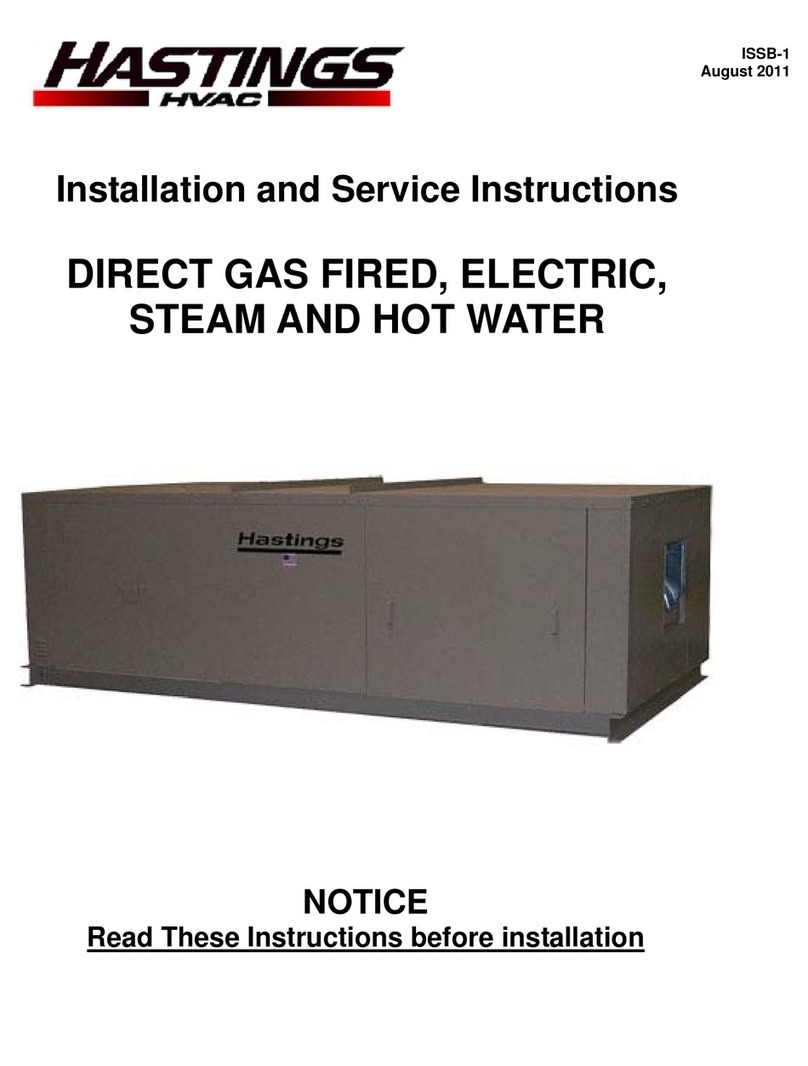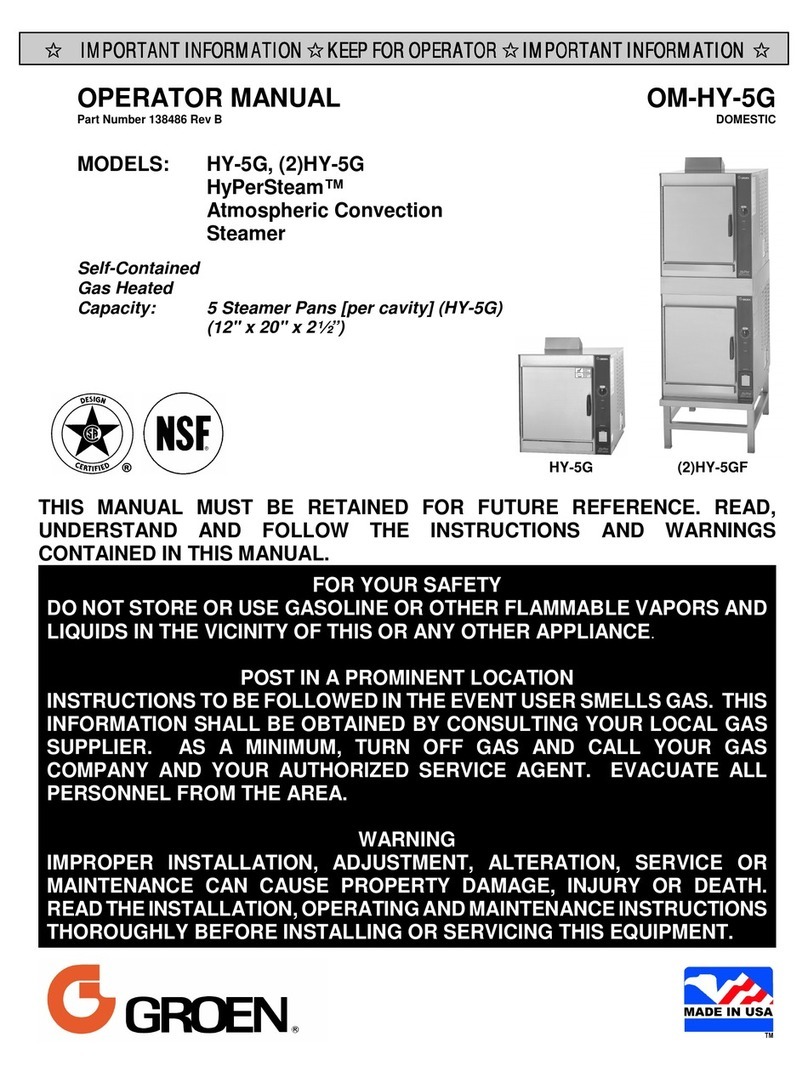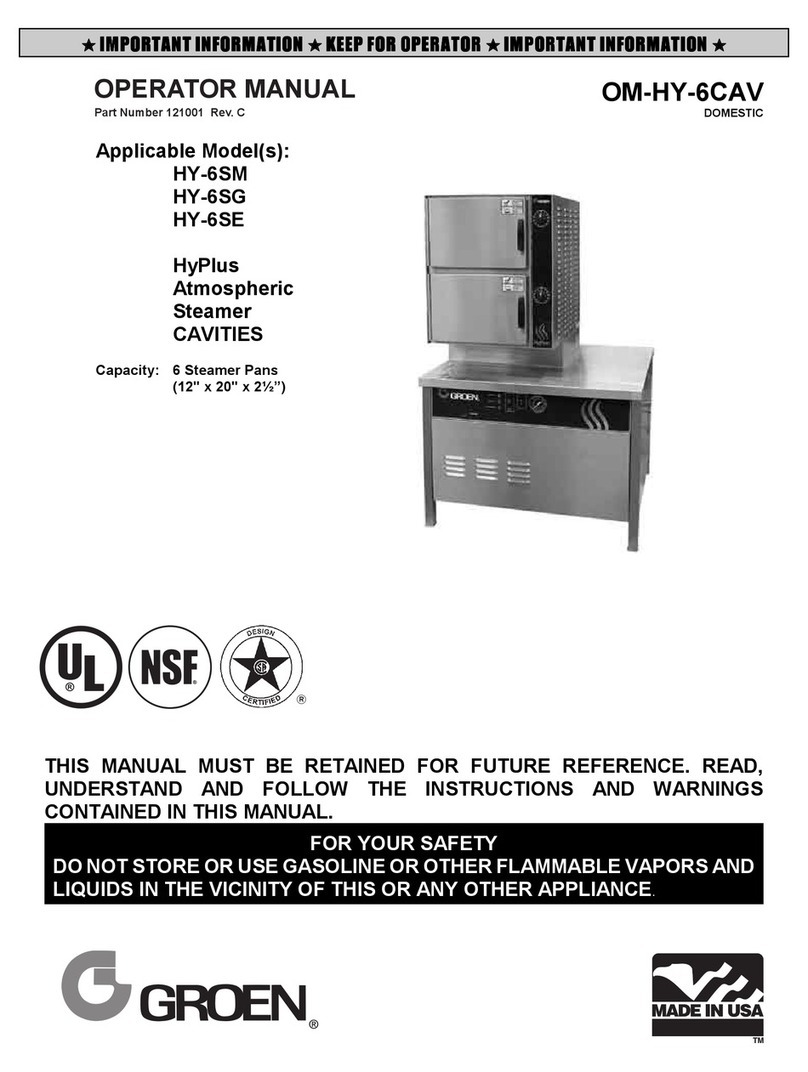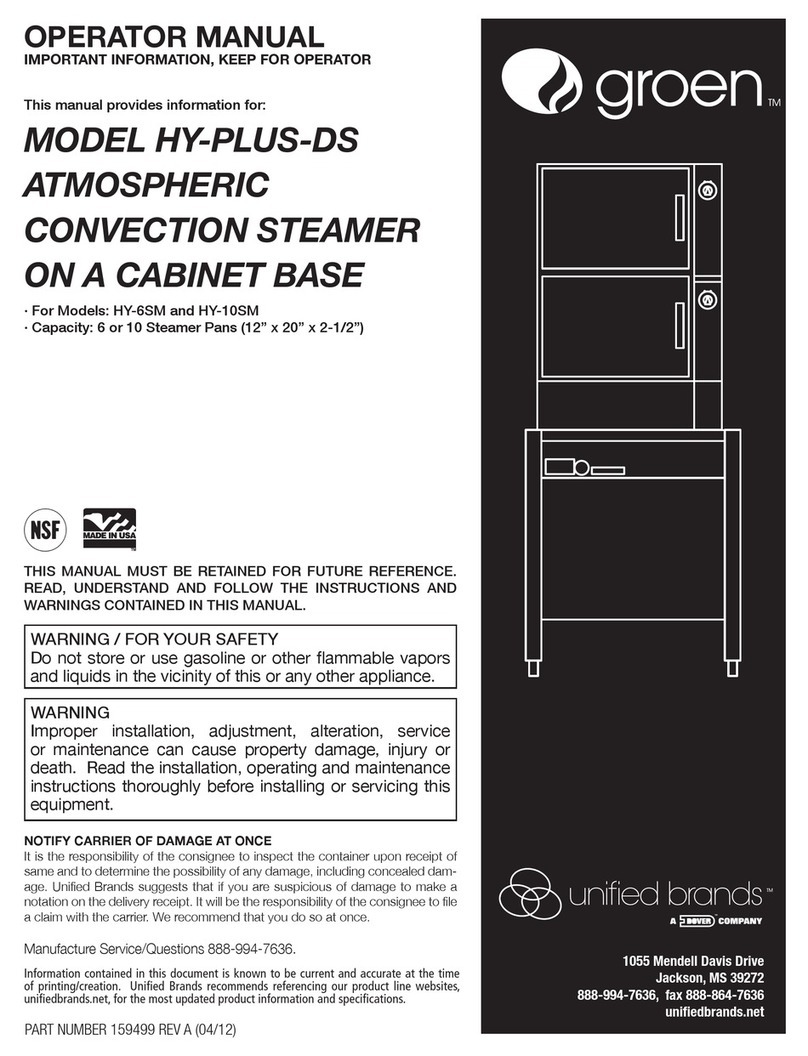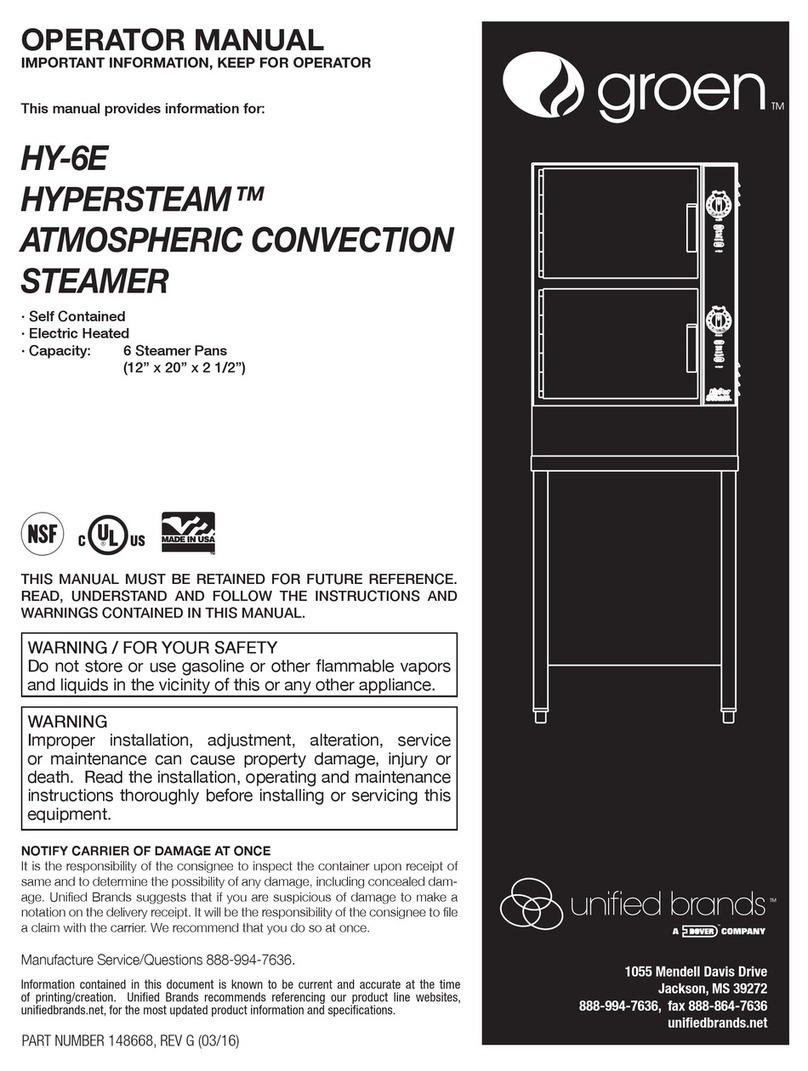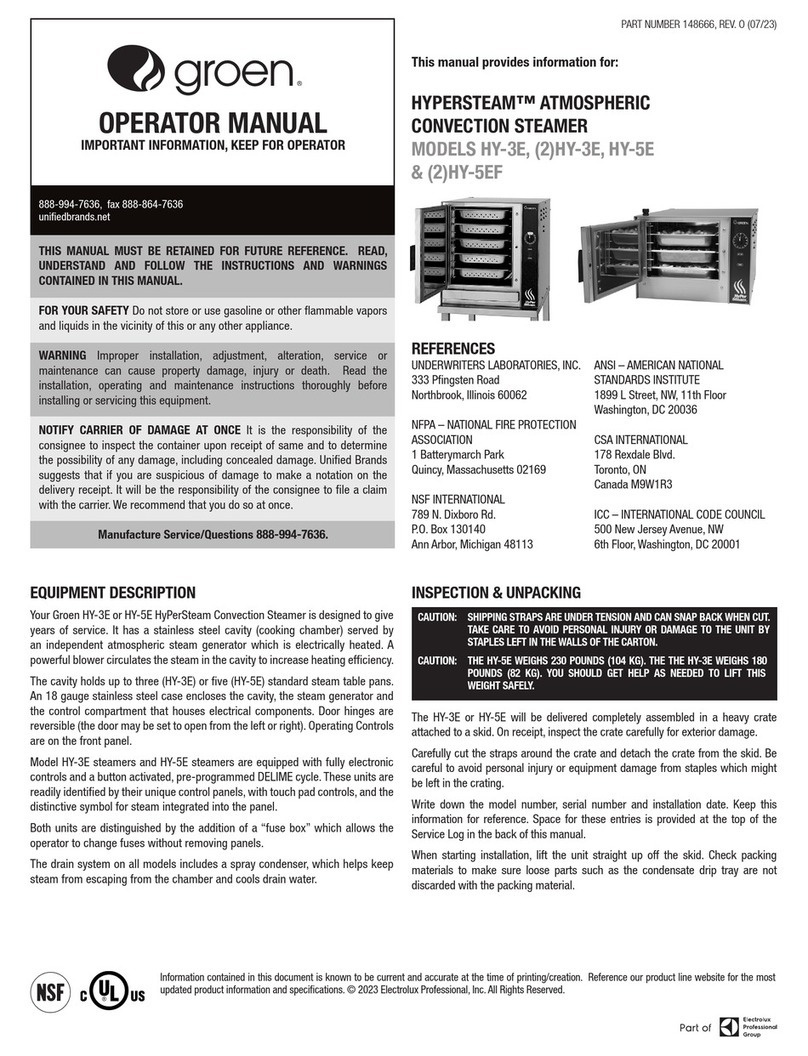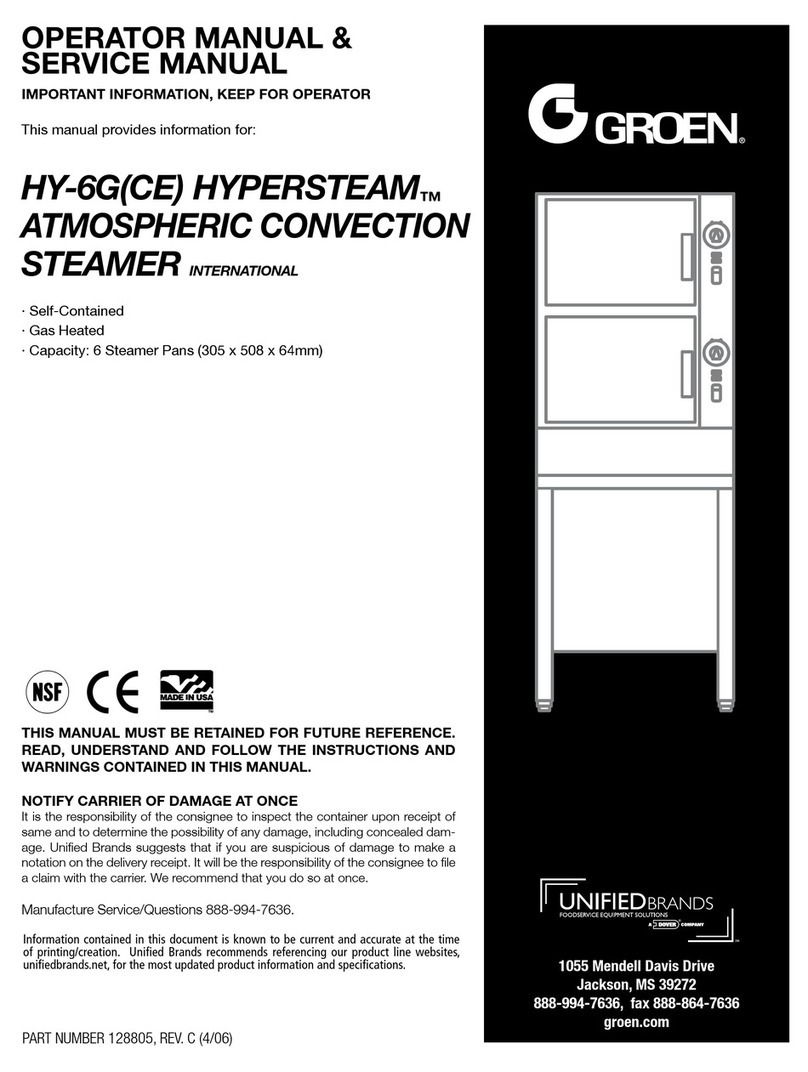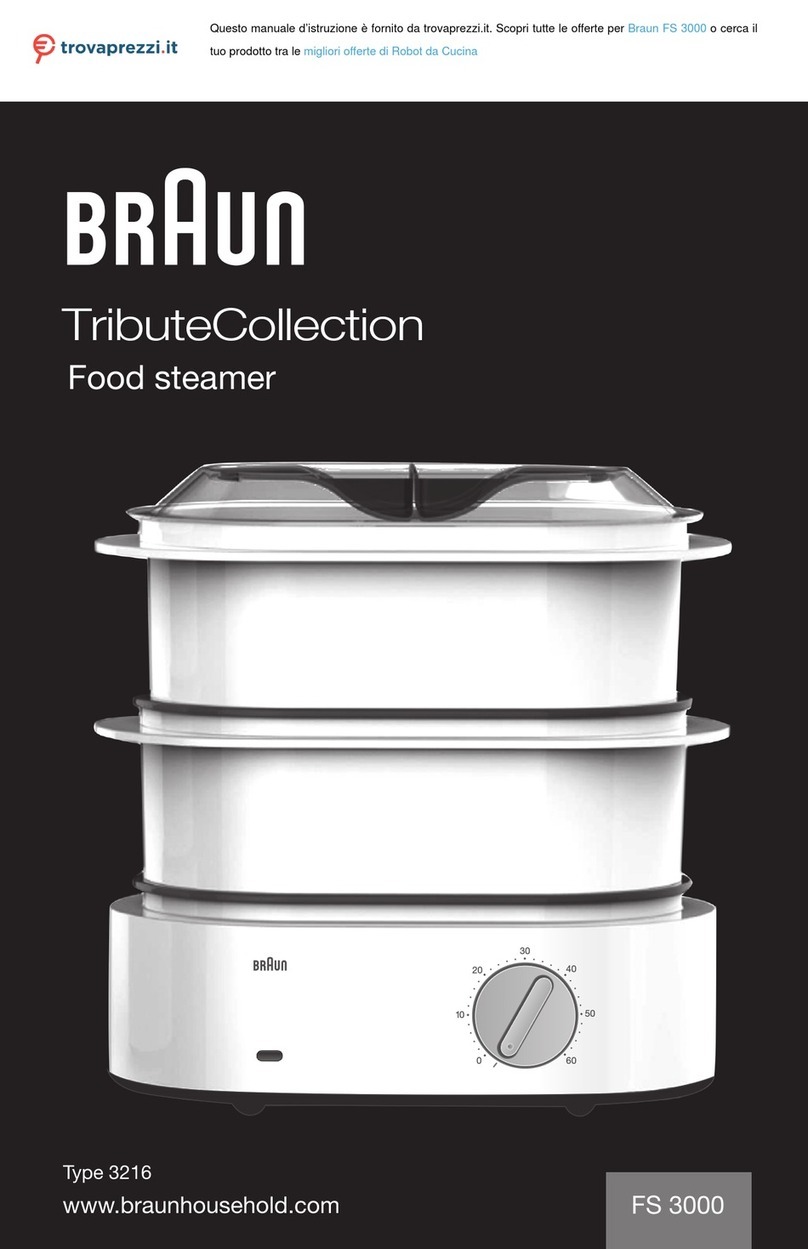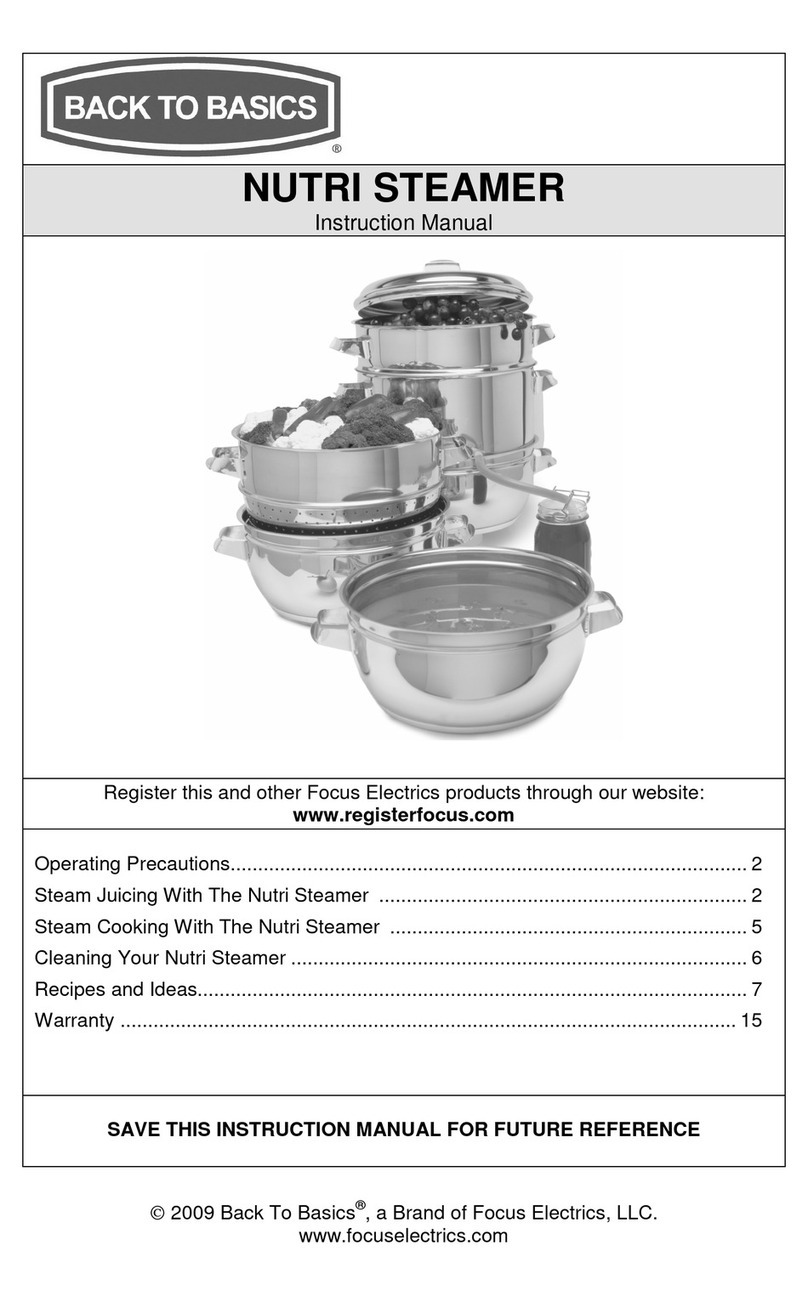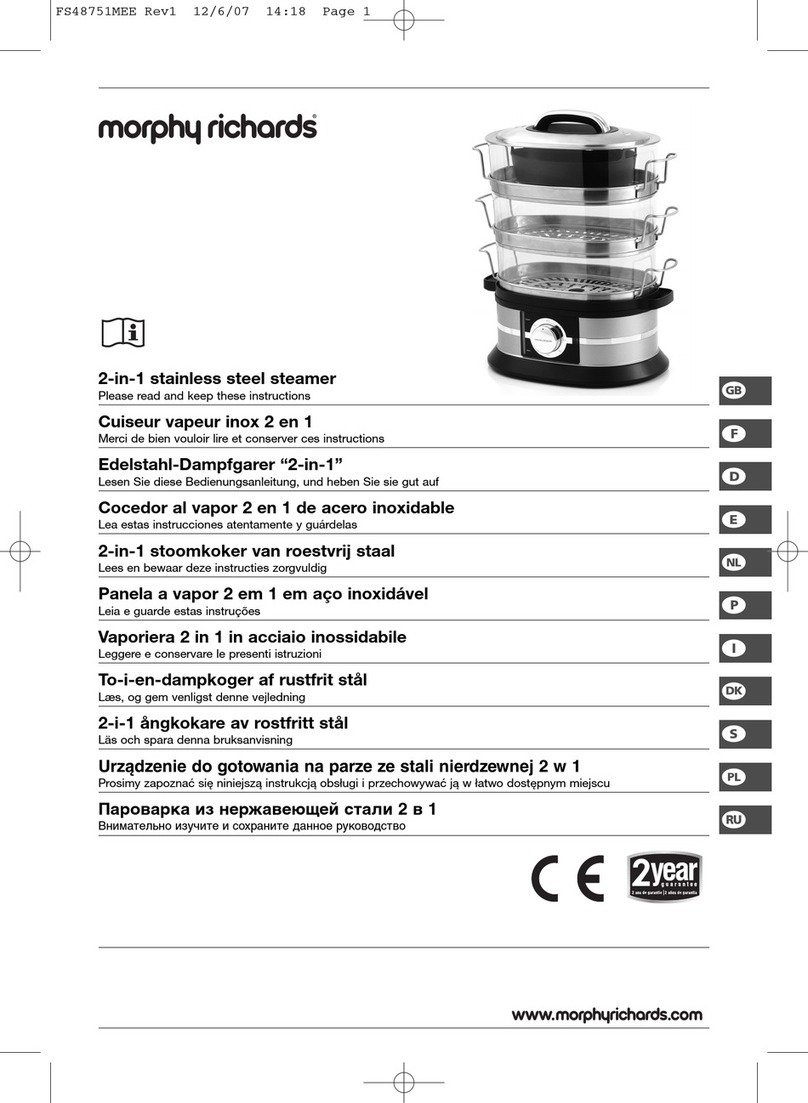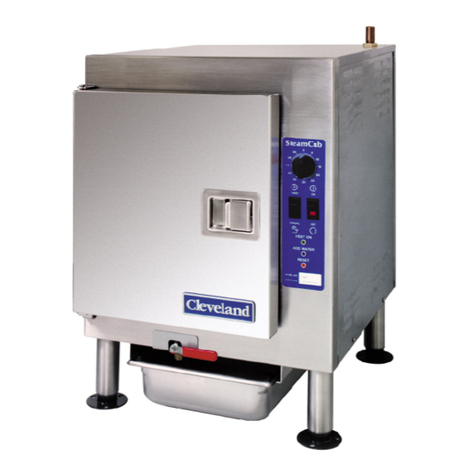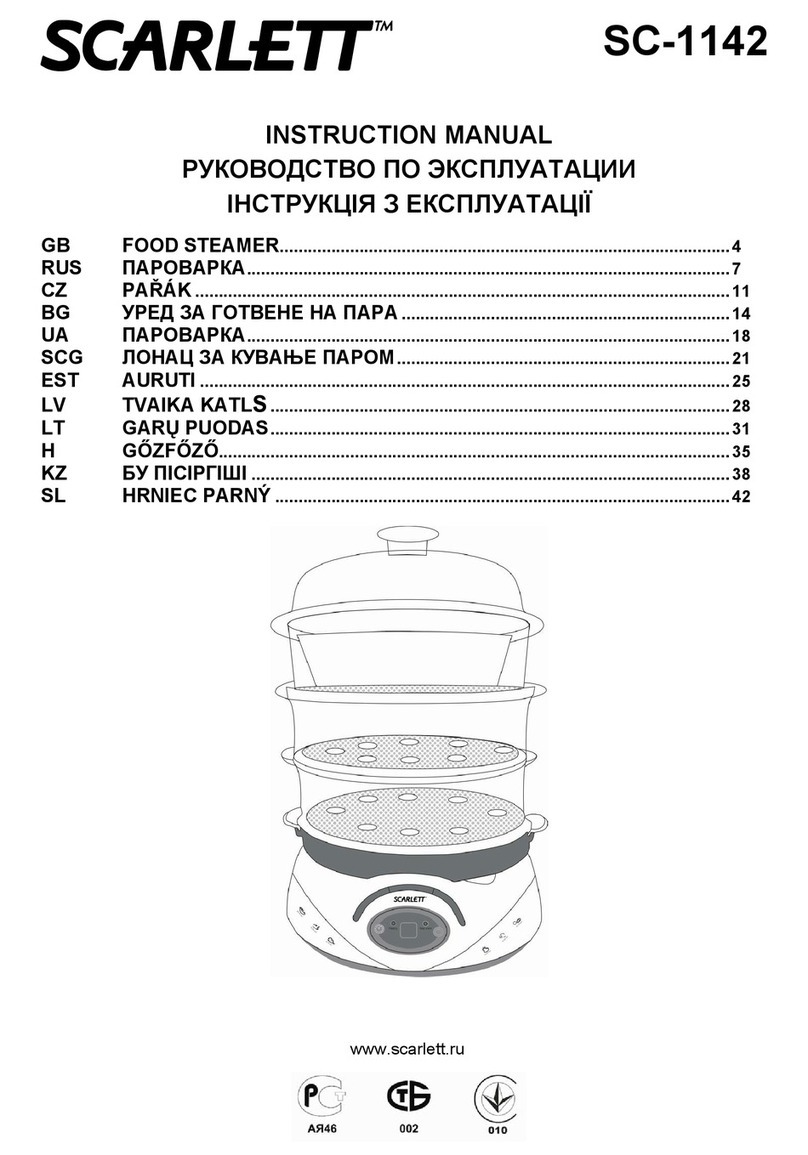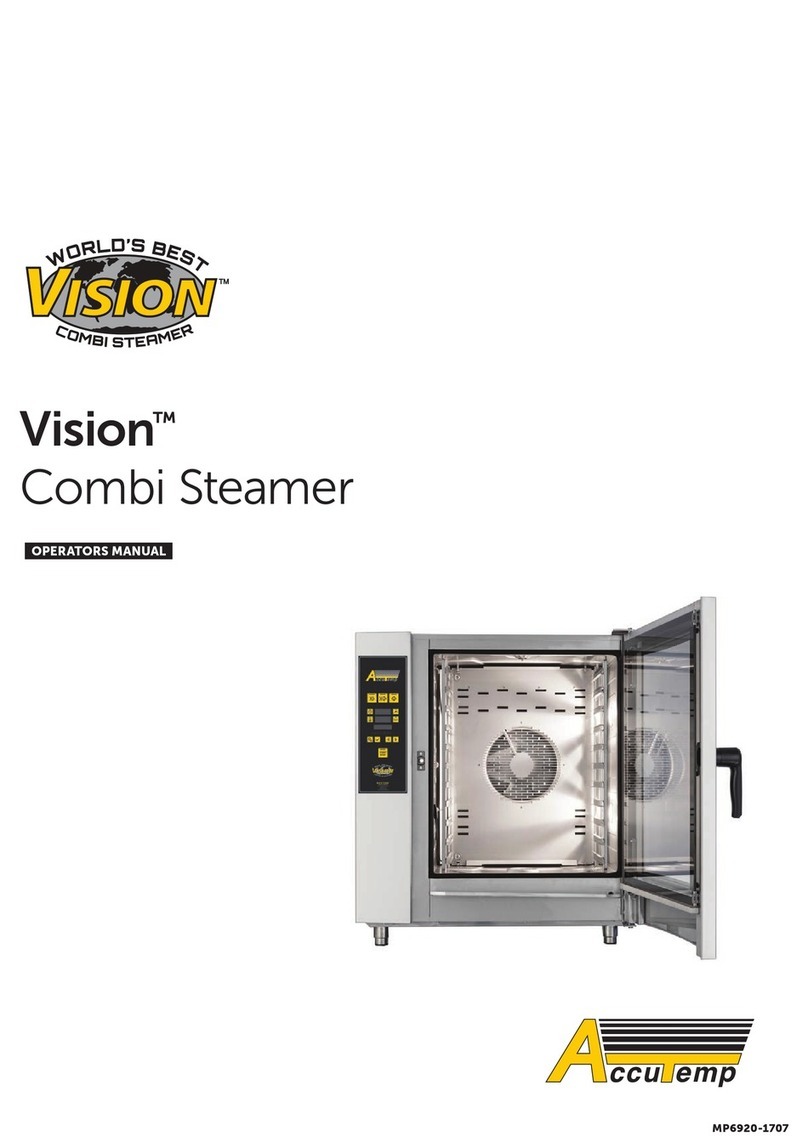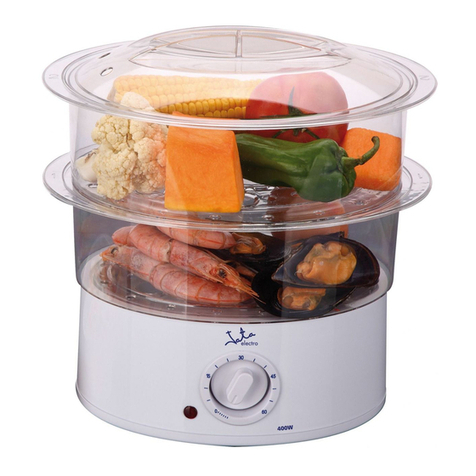
7
The open end of the pop safety valve elbow
must face downward.
Installation &Initial Start-Up
For efficient performance the DH kettle must be
installed in a well-ventilated area. Items which might
restrict or obstruct the flow of air for combustion and
ventilation must be removed. The area directly
around the appliance must be free of combustible
materials.
WARNING
THE KETTLE MUST BE INSTALLED BY
PERSONNEL QUALIFIED TO WORK WITH
ELECTRICITY AND PLUMBING. IMPROPER
INSTALLATION CAN RESULT IN INJURY TO
PERSONNEL AND/OR DAMAGE TO
EQUIPMENT.
1. Installation on combustible floors is allowed.
Rear clearance of 10 inches and two inches at
both sides is required for both combustible and
non-combustible construction. A 10" clearance
or access on the right side is recommended for
service.
2. The installation must conform with local codes or
the American National Standards Z223.1-
(current edition) National Fuel Gas Code. The
kettle should be installed in an adequately
ventilated room with provision for adequate air
supply. The ventilation employ must employ a
vent hood and exhaust fan with no direct
connection between the vent duct and the kettle
flue. Do not obstruct the flue or vent duct after
installation.
3. Set the kettle in place and level it using a spirit
level on the bar rim, by turning the bullet feet to
adjust leg length. Allow clearance around the
unit for cleaning, maintenance and service.
Clearances For DHS-40
Required Recommended
Left Side 6" 6"
Right Side 6” 10" (for service)
Rear 10" 10" (for tilting)
4. Complete the piping to the gas service main with
½” line or approved equivalent.
5. For standard units, provide 115 vac, 60 Hz,
single phase 5 AMP electrical service. Local
codes and/or The National Electrical Code
should be observed in accordance with
ANSI/NFPA 70 - (current edition). Use the wiring
diagram inside the service panel and in this
manual.
6. Bring electrical service through the entrance at
the rear of the support housing with a ½ inch
conduit connector. Make a watertight connection
with the incoming lines, utilizing the water
resistant conduit fitting provided on the unit.
DANGER
ELECTRICALLY GROUND THE UNIT AT THE
TERMINAL PROVIDED. FAILURE TO GROUND
UNIT COULD RESULT IN ELECTROCUTION
AND DEATH.
7. Electrically ground the unit at the terminal
provided.
8. After the kettle has been connected to the gas
supply, check all gas joints for leaks. DO NOT
USE FLAME TO CHECK FOR LEAKS. A thick
soap solution or electronic gas leak detector
should be employed.
9. PRESSURE TEST WARNING
a) Test pressure exceeding ½ PSIG (3.45kPa).
During pressure testing of the gas supply
piping system at pressures exceeding ½ ,
the appliance and its individual shutoff valve
Must be disconnected from the gas supply
b)Test pressure equal to or less than ½ PSIG
(3.45kPa.) During pressure testing of the gas
supply piping system at pressures equal to or
less than ½ PSIG, the kettle must be isolated
from the gas supply piping system by closing
Its individual manual shutoff valve.
10. Make sure the water level is correct in the jacket,
by confirming that the level is near the middle of
the sight glass. If the water level is low, follow
the instructions in Jacket Filling and Water
Treatment in the maintenance section of this
manual.
